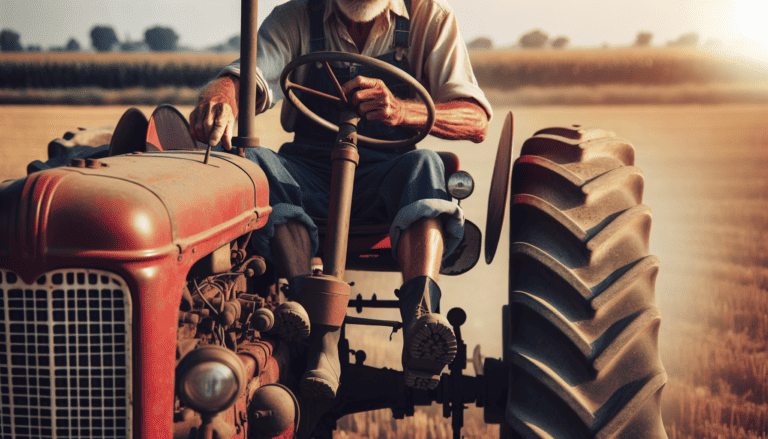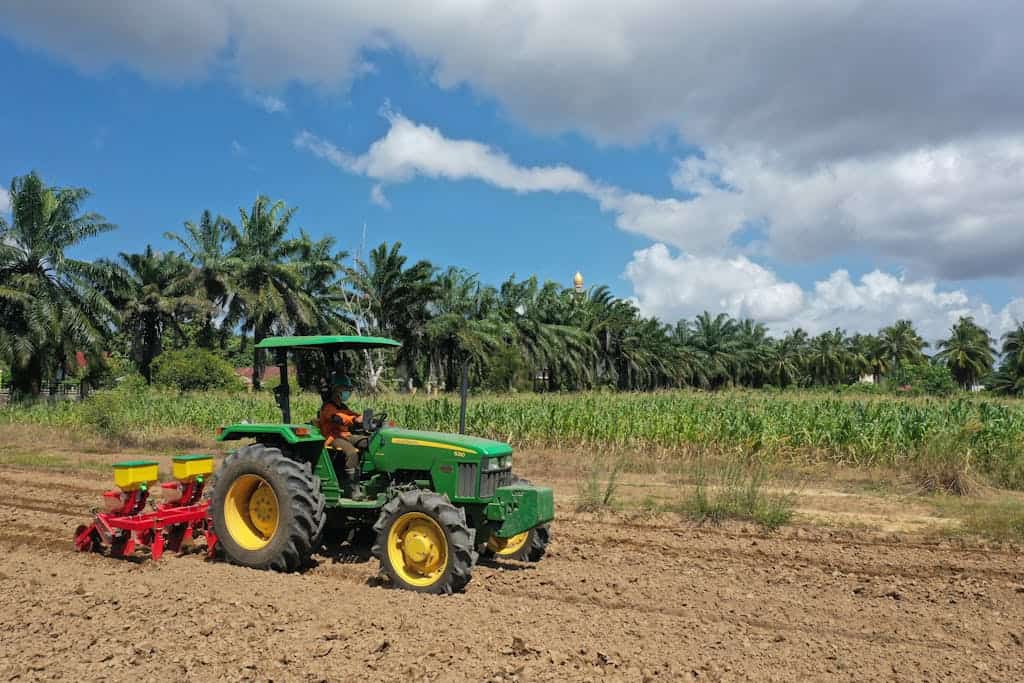Explore the Best Types of Tractors for Every Agricultural Need
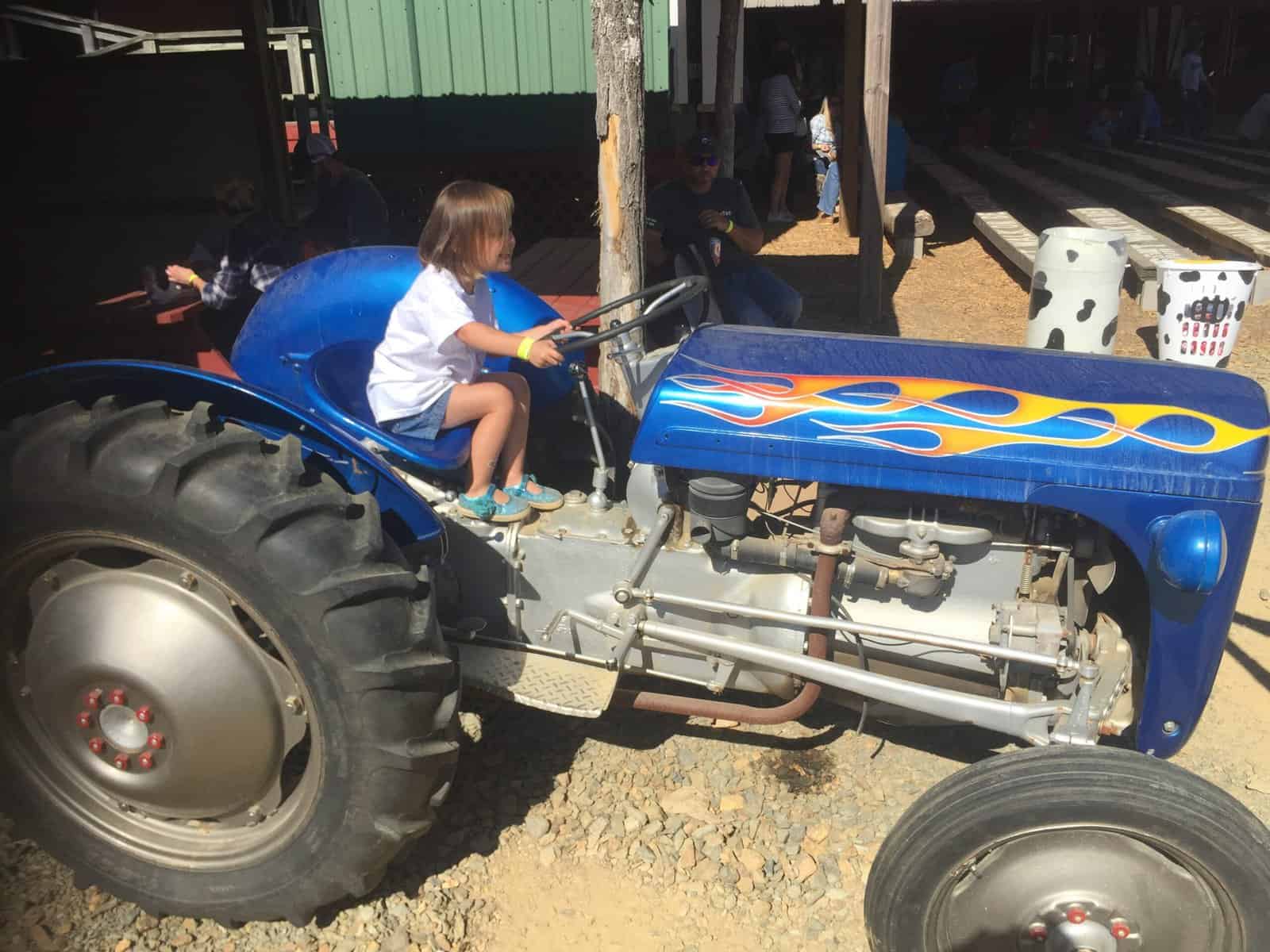
Choosing the right tractor can feel like navigating a maze of machinery. This article simplifies the process by breaking down the types of tractors and their ideal uses. From the agility of compact models to the brute strength of industrial ones, we cover the key features and applications that define each category. With a direct look at everything from garden tractors for your backyard to autonomous machines for high-tech farming, you’ll finish with a clear understanding of which tractor type suits your specific tasks – all without the sales pitch.
When I first got a farm, picking out a tractor was one of the most costly, overwhelming, and exciting activities I had to do. If you have ever seen “Clarkston’s Farm”, I just wanted to drive home a Lambo (see funny video below). But I needed something a bit more reasonable. Personally I settled on a Compact Utility Tractor. The size makes it more usable around my property but heavy duty enough to carry the large loads, cut the pasture, and smooth the gravel roads. I also got a John Deere which I have always wanted, but still debate weekly with my friend over Green vs Orange. And for some of us…. Your first tractor may not be your last or your only one.
Key Takeaways
Compact and sub-compact tractors are cost-efficient, beginner-friendly, and versatile with attachable implements for various tasks; utility tractors and row crop tractors excel in larger scale, versatile agricultural applications with higher horsepower and specialized designs for crop management.
Specialty tractors cater to particular farming needs with high utility in restrictive spaces such as orchards or vineyards; industrial and earthmoving tractors are essential in construction for tasks like moving materials and excavation; autonomous and military tractors utilize advanced technologies and are suited for precision agriculture and challenging environments respectively.
Garden and lawn tractors are optimal for residential lawncare tasks, with various attachable implements for a range of activities; classic tractors have a charm and operational simplicity that make them valuable, and DIY tractor kits allow enthusiasts to build customized tractors suited to personal preferences.
Compact and Sub-Compact Tractors
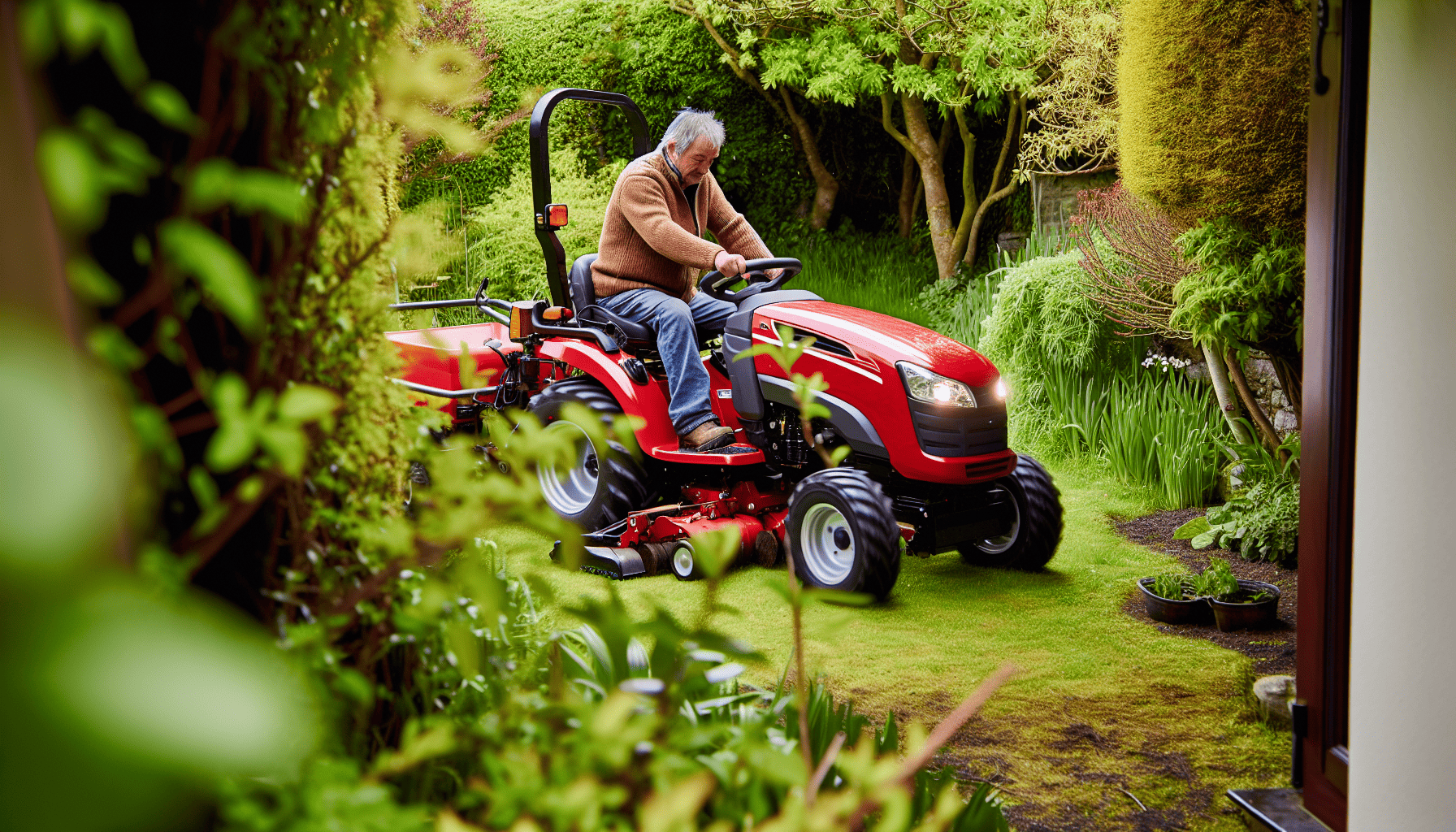
Compact and sub-compact tractors excel in affordability and fuel efficiency. Their smaller size not only results in lower costs for gasoline and maintenance, but also allows for easy maneuverability in tight spaces. Known for their durability and longevity, compact and sub-compact tractors are designed for easy maintenance. From automating manual tasks to offering versatile customization options, these tractors are built to increase efficiency and productivity.
These tractors can perform tasks such as:
Mowing
Digging
Grading
And more
Thanks to a variety of available attachments. Despite their compact size, these tractors are designed with fewer controls, making them more beginner-friendly. They feature an easy-to-use design, offering safe operation across a variety of tasks. For proper functionality, the hydraulic pump capacity of the tractor needs to match the requirements of the attachments.
Compact Utility Tractors
Compact tractors possess a multitude of benefits, such as:
Their smaller stature provides high maneuverability, allowing them to operate in tighter spaces where walk-behind tools would normally be necessary.
The design of their articulating and oscillating frames significantly reduces the risk of harming turf, which is ideal for jobs requiring careful ground maintenance.
They come with liquid-cooled diesel engines along with sophisticated fuel injection technology that delivers ample power to handle heavy loads while optimizing efficiency and diminishing fuel usage.
Choosing to rent a compact tractor brings several advantages including:
It’s cost-effective,
More environmentally sustainable due to reduced fuel consumption compared with larger alternatives,
Constant four-wheel hydrostatic drive ensures exceptional traction and consistent performance across various farming activities.
Certain models of compact tractors are outfitted with both four wheel drive capabilities and an operator’s cab. This increases their functionality. By providing additional utility across varying climatic conditions.
Review the Best Compact Utility Tractors on the market!
Sub-Compact Tractors
Sub-compact tractors, which are commonly equipped with 20 to 25 horsepower, come with the following features:
Diesel engines that have two or three cylinders
Attachments for buckets
A significant capacity for lifting
Hitching systems of the three-point kind
Mowers designed to operate underneath or be towed behind
These types of tractors tend to be a great match for individuals purchasing their first tractor who might have restrictions on space or budgetary constraints.
Mahindra® offers sub-compacts that provide advantages such as:
Greater engine displacement yielding reduced RPMs during operation
An extended lifespan for the engine
More quiet operations
-A boost in fuel efficiency
Such attributes add value to the overall utility provided by sub and compact tractors.
Utility and Row Crop Tractors
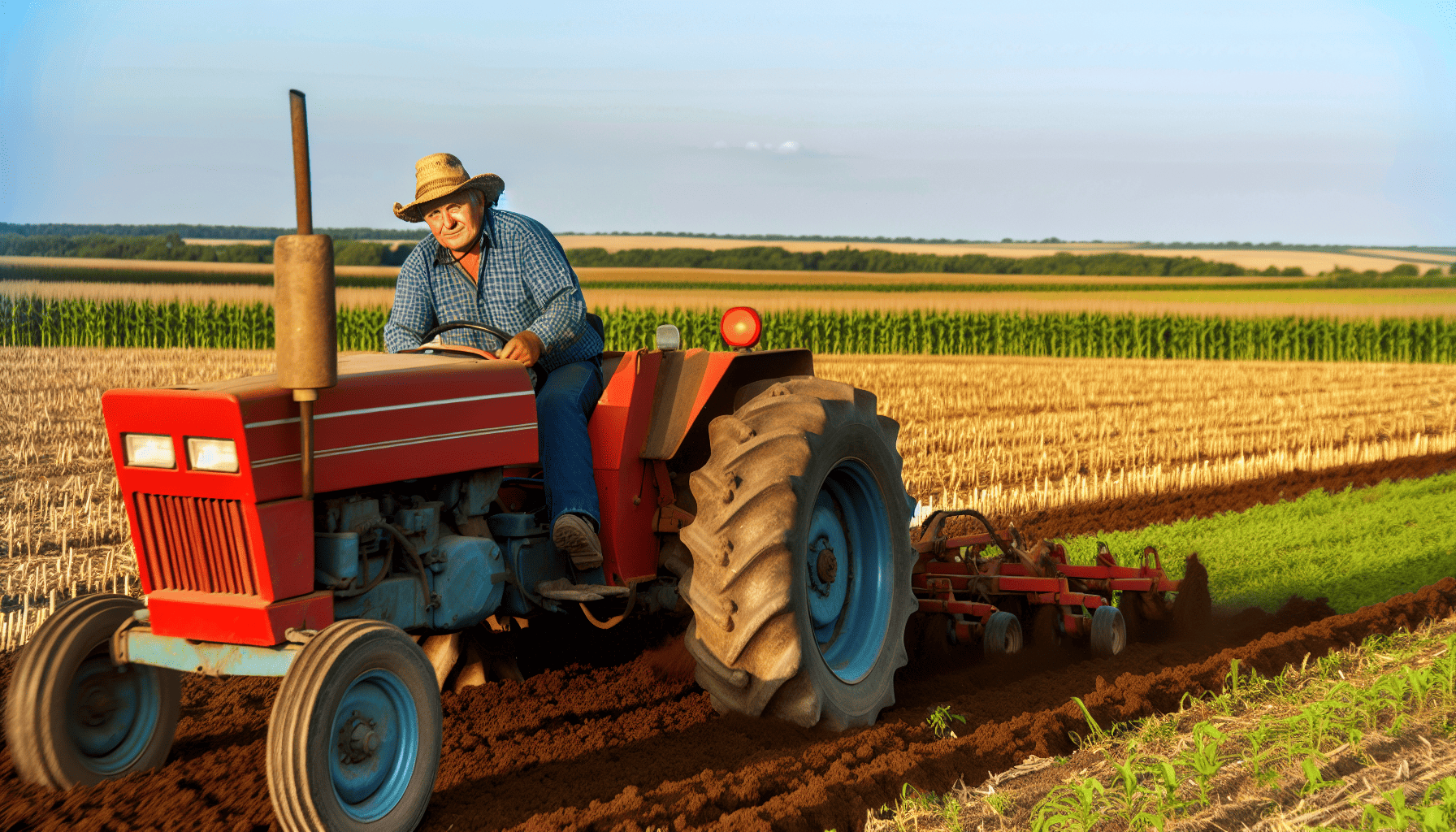
Utility tractors and row crop tractors are both designed for expansive agricultural jobs. Utility tractors, known for their adaptability, come with engine strengths that vary from a modest 15 horsepower to an impressive 120+ horsepower. They excel in performing diverse tasks across farms of varying dimensions, but may not always have the adjustable axles or three-point hitches found on some row crop tractors – these components being essential for particular agricultural operations.
Conversely, row crop tractors are tailor-made for meticulous cultivation and plant care thanks to their thoughtful engineering which incorporates:
Elevated ground clearance apt for navigating over taller crops
A Heavier build along with an elongated wheelbase to bolster stability during assorted farm work activities
More pronounced ground clearance compared to utility counterparts allows them pass smoothly above crops without inflicting harm.
Utility Tractors
Utility tractors are known for their versatile nature, boasting compact yet robust builds with engines ranging in horsepower from 40 to over 100. These machines typically run on gasoline or diesel and provide consistent performance across a variety of operations.
These tractors excel at an array of agricultural duties including plowing and come in varying horsepower categories like 36-50 HP suitable for tasks involving clay soil, to the more powerful models between 51-90 HP designed for strenuous activities. Tractors equipped with four-wheel drive offer improved traction, which is crucial when handling heavy loads or working under slippery conditions, while those with front-wheel-assist are especially effective on expansive terrains or challenging landscapes.
Row Crop Tractors
Row crop tractors are designed with rear wheels that can adjust their distance apart, ensuring suitability for diverse row widths. They support central mounting of tools like seeders and cultivators, while also providing ease of steering and a design conducive to precise maneuvering between rows. These tractors excel when working with crops commonly sown in lines such as corn, soybeans, and cotton.
These versatile crop tractors can be equipped with a variety of implements that extend their functionality across numerous farming tasks. Among these implements are threshers, water pumps, sprayers, and robust lift mechanisms. Row crop tractors handle an array of precision agricultural operations including planting seeds precisely spaced apart (by pulling seed drills), soil plowing/turning over the earth’s surface layer (plowing), breaking up clods (harrowing), cutting grass or other plants close to ground level often using machine power by rotating blades(harvest mowing), managing unwanted plant growth (weed control).
Specialty and Orchard Tractors
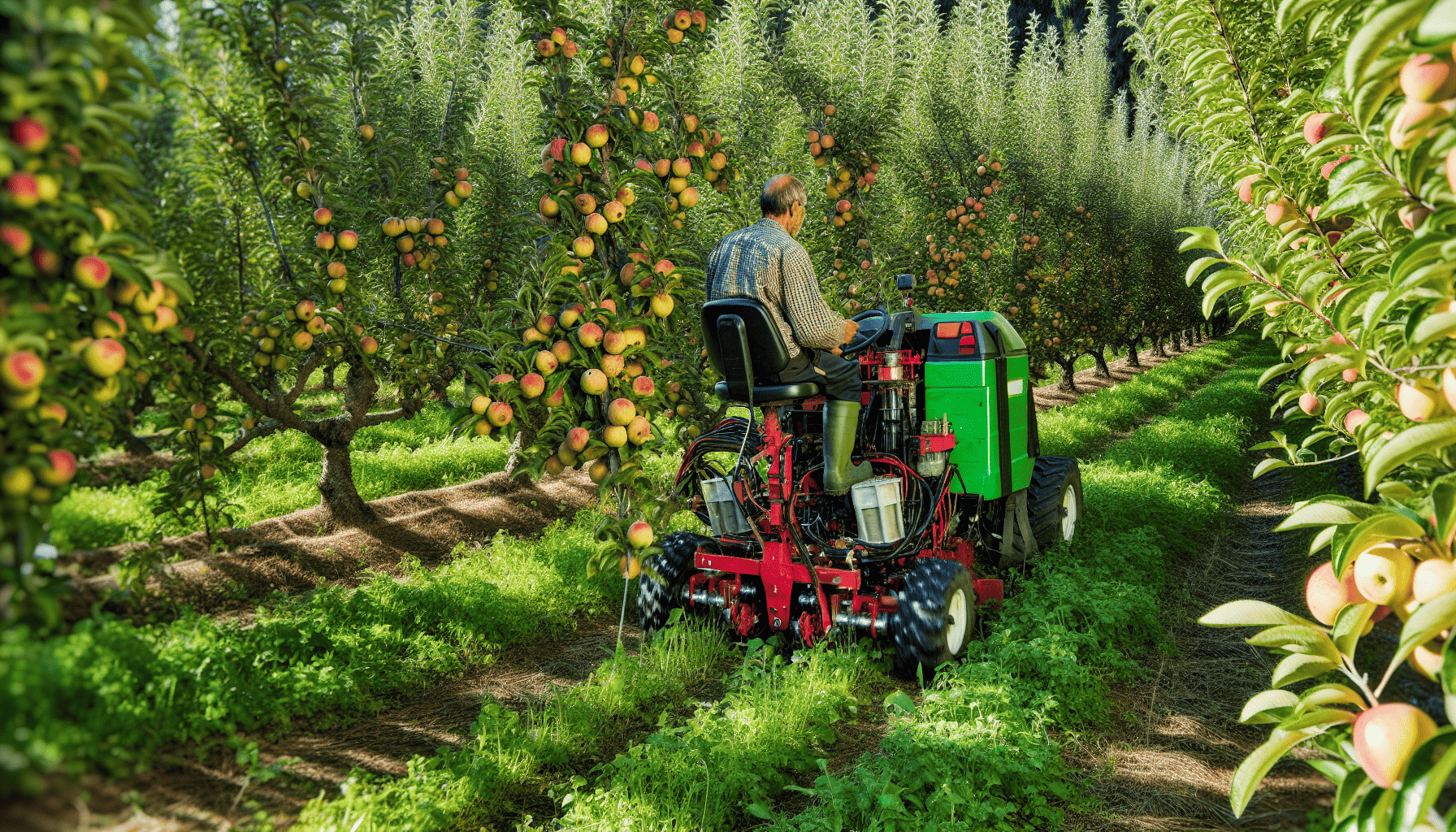
Specialty tractors are tailored for demanding conditions in niche agricultural sectors, offering versatility across various types including narrow, crawler, and low-profile designs suited to specific tasks. Similarly, orchard tractors are engineered with a focus on functionality in confined areas, making them ideal for navigating between rows of trees and vines.
These orchard-specific models feature a distinctly low profile that allows for minimal ground clearance essential for maneuvering within tight confines. They come equipped with protective shields over the wheels and powertrain—most notably at the back—to protect both the equipment and crops from any potential harm during operation.
Specialty Tractors
Specialty tractors are designed to meet particular agricultural needs, featuring a range of transmission types, hydraulic functions, and power take-off (PTO) horsepower ratings. These tractors come in engine horsepower that varies from 24.7 to 155 HP, offering versatility for various tasks as provided by John Deere.
The array of features these specialty tractors boast include:
Robust drive trains
Transmission driven by gears
Integrated diagnostics systems
Category 1 three-point hitch suitable for multiple attachments
Creeper gear options
Availability of either mechanical or hydraulic four-wheel drive systems
Various configurations for operator stations
To excel at specific jobs like managing high clearance requirements or working within constrained spaces, specialty tractors are equipped with design enhancements such as raised frames on high-crop tractors and the slim profiles of narrow tractors which allow them to effortlessly move through tight areas.
Orchard Tractors
Orchard tractors are designed with sleek bodywork that integrates internal pathways for air intakes and exhausts, ensuring they don’t snag on tree limbs. Models like the 5075EN orchard tractor are crafted to perform precise operations amidst sensitive, high-value crop environments.
These tractors may also come fitted with sophisticated technologies such as the Smart-Apply Intelligent Spray Control System which enhances both efficacy and accuracy in distributing chemicals. With a spectrum of engine power and Power Take-Off (PTO) horsepower selections available, orchard tractors illustrate their adaptability to suit diverse requirements dictated by different orchards and varying soil compositions.
Industrial and Earthmoving Tractors
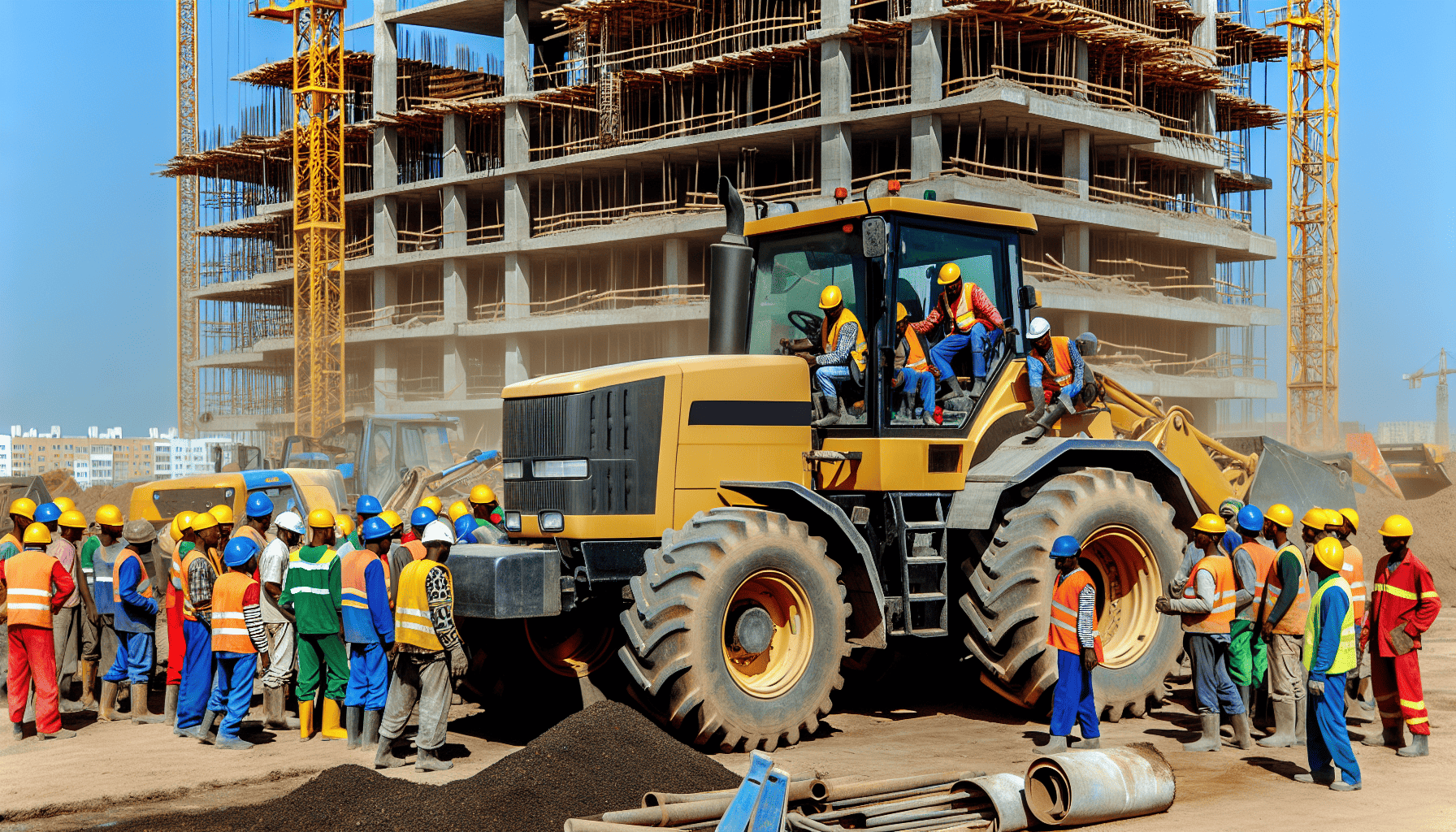
Industrial tractors, or tuggers as they are sometimes called, are engineered to undertake demanding tasks such as hauling heavy loads. They play a significant role in construction settings due to their exceptional towing strength and adaptability for use on rough terrains.
Conversely, earthmoving tractors—frequently referred to as earth moving tractors—are indispensable tools used mainly for the transportation of materials including soil, mud, stones, and rubble that one typically encounters on construction sites, quarry operations, and dam building projects. Their capabilities make them essential equipment for excavation-related work like digging trenches or sculpting landforms during various landscaping and construction endeavors.
Industrial Tractors
Equipped with commercial engines, heavy-duty transaxles, and drawbars for attaching implements, industrial tractors possess the capability to tow extremely heavy loads.
Providing a spectrum of horsepower options, these tractors are designed to meet the substantial strength demands required by rigorous industrial tasks. They are pivotal in performing high-capacity lifting and transporting materials as well as clearing debris on demolition sites.
To safeguard operator comfort and safety throughout extended construction activities, particularly in areas prone to harsh weather conditions, many industrial tractors come outfitted with enclosed cabs that include climate control systems.
Earthmoving Tractors
There are various kinds of earthmoving tractors, such as:
Bulldozers equipped with a frontal plate for pushing soil and stones
Excavators characterized by their bucket attachments and articulated arms
Backhoe loaders that provide excavation options on a more modest scale
These farm tractors, particularly the rotary tiller models, typically incorporate durable tracks designed to navigate across challenging landscapes. They come outfitted with tools like expansive blades or buckets to facilitate the effective movement and handling of soil.
In particular tasks like leveling out surfaces, digging foundations for structures, or sculpting landforms for roadways and assorted landscaping endeavors often involve these specialized earthmoving tractors.
Autonomous and Military Tractors
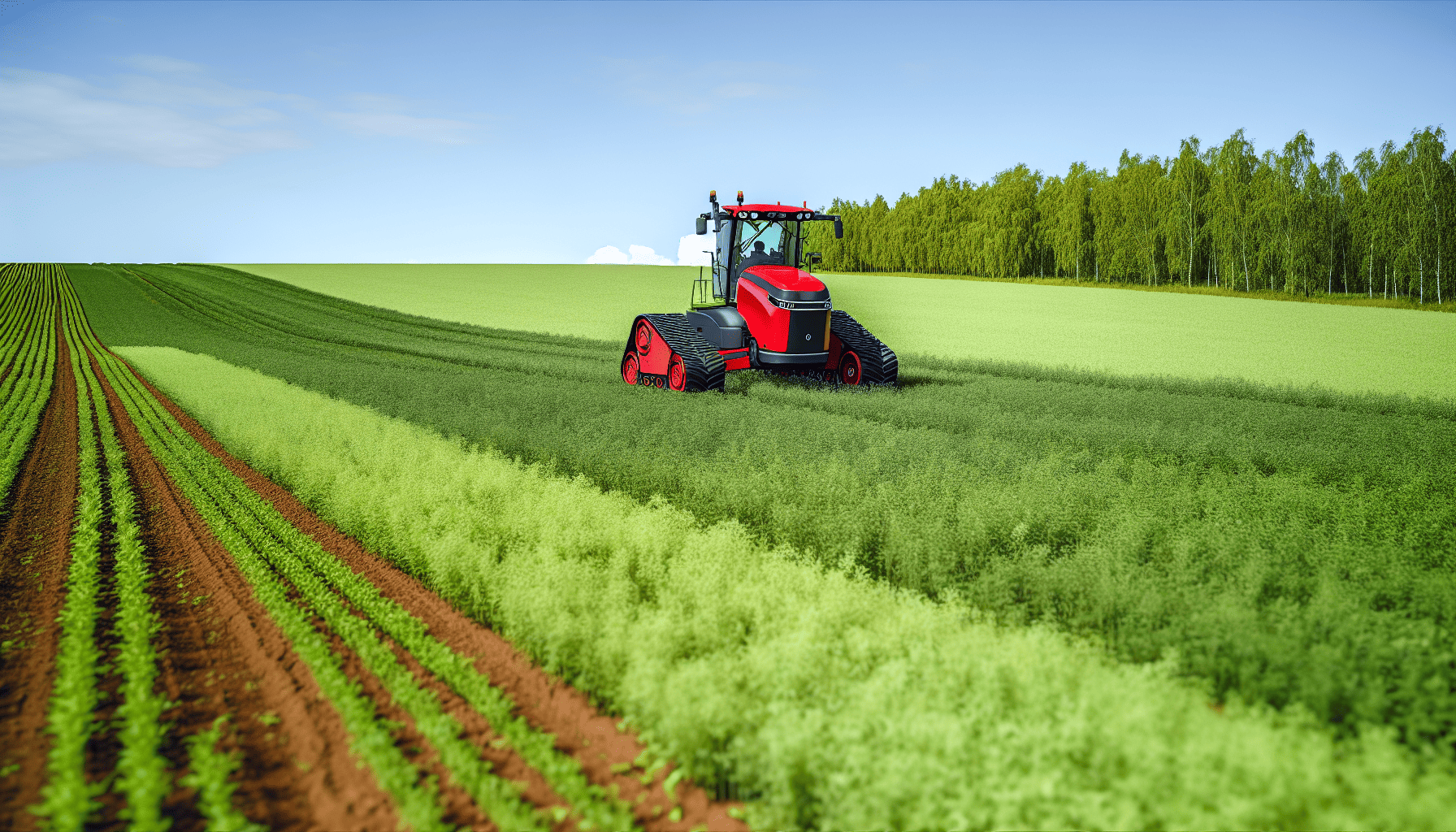
Leveraging state-of-the-art technology, autonomous tractors are outfitted with sophisticated systems like GPS and sensors. These cutting-edge vehicles utilize artificial intelligence to operate, which considerably boosts their functional capabilities.
On the other hand, military tractors are designed for durability with strengthened frames and undercarriages and may possess amphibious or semi-amphibious features allowing them to maneuver on tracks, wheels, or semi-tracks. They serve a multitude of purposes including construction work, demolition activities, erecting temporary roads as well as transporting sizeable military equipment. Equipped with specialized attachments. These tractors can be employed in clearing landmines and constructing defensive structures.
Autonomous Tractors
Autonomous tractors are equipped with sophisticated AI systems, allowing them to conduct farming tasks independently, without a human operator physically present in the cab. These tractors are capable of self-navigation using advanced sensors and are designed to process and calculate their position, speed, and to avoid obstacles.
The implementation of autonomous technology permits a single operator to oversee and manage multiple tractors, enhancing farm productivity and addressing labor shortages. Some benefits of autonomous tractors include:
Minimizing over-spraying, reducing chemical runoff and promoting eco-friendly farming practices
Improving precision agriculture
Increasing efficiency and reducing costs
Overall, autonomous agricultural tractors have the potential to revolutionize farming practices and contribute to sustainable agriculture.
Military Tractors
Tractors utilized in the military are built to operate within high-risk zones, ensuring they possess augmented strength and adaptability. Take the M915 line-haul tractor as an example: it’s specially tailored for logistical operations and is fortified with steel-welded cabs along with integrated vehicle armor that offers protection against ballistic threats.
In order to improve their chances of enduring dangerous settings by diminishing their visibility, military tractors incorporate stealth technology. These machines are formidable and multi-purposeful, adept at undertaking diverse functions even under strenuous circumstances.
Garden and Lawn Tractors
For residential lawn maintenance, garden tractors and lawn tractors are the equipment of choice. Notably adept at numerous tasks such as mowing lawns, transporting materials, engaging in gardening activities, and plowing fields.
To boost their versatility, these tractors can be equipped with various attachments including tillers for cultivating soil, seeders for planting seeds, snow throwers to move snow, front loaders for heavy lifting, and backhoes for digging.
In a similar vein, lawn tractors present themselves as multi-purpose machines that excel not just in grass cutting but also in tilling soil or moving goods around. They become particularly effective at clearing snow when outfitted with dedicated attachments like tractor-mounted snow blowers or blades affixed to the front end—providing an efficient way for homeowners living where winters bring substantial amounts of snowfall to manage this seasonal challenge.
Garden Tractors
Primarily designed for lawn maintenance, garden tractors serve crucial functions like mowing the grass and crafting flower beds. These tractors come with cutting decks capable of handling widths as wide as 54 inches and can be fitted with various implements such as turning plows and cultipackers to augment gardening tasks.
Specific attachments tailored for individual tractor models, including angle iron disc harrows and deluxe square tube framed disc harrows, are available for these machines. Constructed to endure, these accessories leverage more than a hundred years of industry knowledge to guarantee durability and consistent performance in all your gardening endeavors.
Lawn Tractors
Lawn tractors are multifunctional tools that can tackle tasks such as tilling, hauling, and snow plowing. They come with a range of attachments and accessories to boost their capabilities. When confronted with lighter accumulations of snow, lawn tractor owners can swiftly attach snow plows to their tractors for easy and efficient removal.
For more substantial amounts of snowfall, the use of attachments like snow blowers becomes invaluable. They assist in effectively distributing the snow away from pathways and driveways without having to create mounds. During harsh weather conditions, operators have the option to enhance both comfort and safety by equipping their lawn tractors with weather-protection accessories including ROPS Hard-Side Cabs.
Review the best lawn tractors for your needs.
Classic Tractors, Working Treasures
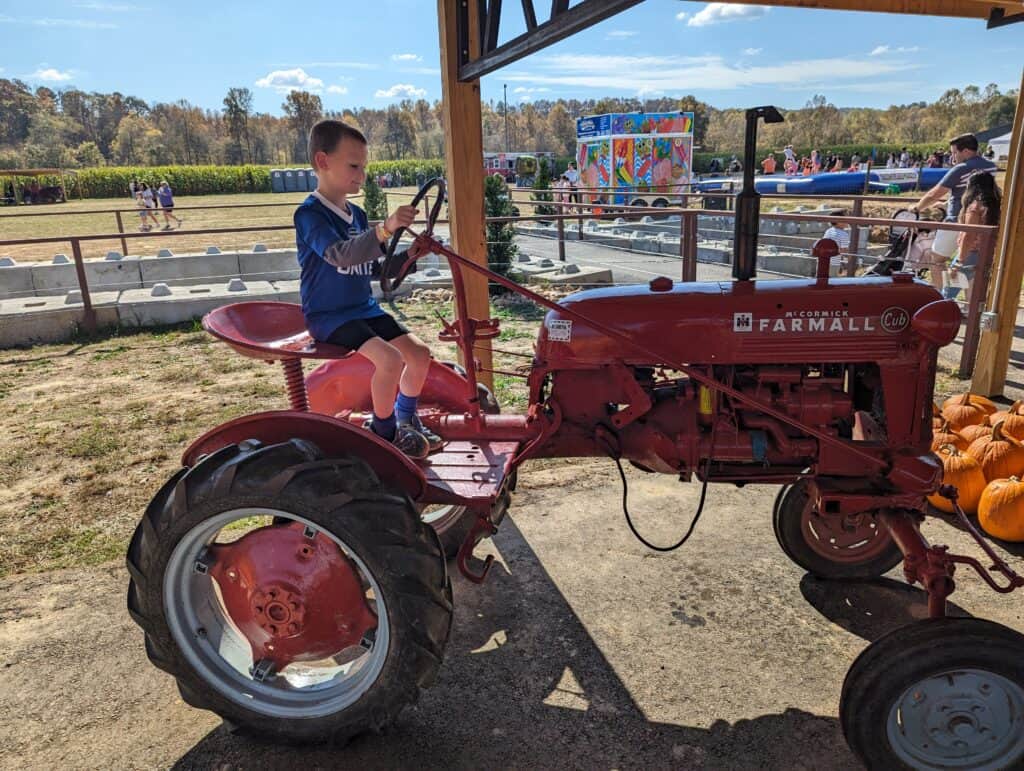
Vintage tractors captivate with their unique allure, and their straightforward design and maintenance appeal to those who appreciate the charm of a bygone era in agriculture. Such tractors stand out for providing considerable utility at a cost often favorable when weighed against contemporary models, proving themselves as practical assets on modest homesteads and small-scale farms.
These venerable machines possess an intrinsic showpiece quality. They draw the eye during festivities such as tractor pulls or while simply partaking in local parades. Selected classic tractor brands that are kept in excellent condition tend to increase in monetary value as time passes, offering not just historical interest but also serving as possible financial investments.
DIY Tractor Kits, Conversions, and Thrill of Build Your Own
DIY tractor kits, conversions, and build-your-own options offer a special chance for hands-on tractor aficionados who relish personalization and the excitement of constructing their own machinery. These opportunities grant enthusiasts access to tailor-made equipment that can be crafted to fit individual requirements and tastes.
In this particular niche within the tractor community, there is an appreciation for the artistry involved in creating something one-of-a-kind. Whether it’s transforming a vintage truck into a functional tractor or beginning with a bare-bones DIY kit, these choices provide limitless potential for customization.
Don’t forget the kids
If you have kids, you will know your obsession can become their obsession. Getting them a mini tractor is a must. You will be amazed at how much power these things make and how long a good battery will last. You can get a mini utility tractor or a UTV style. Whatever it is your kids will put it to use. Make sure you get one with at least a 12V electric.
For those still to young to be zooming down the road a simple foot push or peddle will do nicely. They just want to be like you. So lean in and enjoy your time with them. Also it will keep the little ones busy why you take care of your daily yard and farm chores.
Choosing the Right Tractor for Your Needs
Selecting the appropriate tractor is a pivotal decision that hinges on evaluating several key factors, including farm size, terrain characteristics, intended functions of the machinery, and necessary technical details like compatible attachments. The horsepower selection for tractors should align with anticipated tasks, landscape features of the property, as well as other land-related conditions.
Gaining firsthand experience by test driving diverse models can shed light on their operational ease-of-use, comfort during use, field of vision provided to the operator and general quality—elements that are vital for proficiently running such equipment. Delving into research about different makes and models will aid in pinpointing a dependable tractor known for robust customer support services after purchase. One which offers straightforward maintenance procedures alongside preserving substantial value upon resale.
Renting vs. Buying a Tractor
Opting whether to rent or purchase a tractor hinges on the length and regularity of your project. Renting might be more beneficial for those who require machinery sporadically for specific tasks, as it alleviates the burden of ongoing costs and responsibilities associated with upkeep, repair work, and storage concerns.
Conversely, acquiring ownership of a tractor could prove to be more cost-effective for continuous long-term usage. Crafting an all-encompassing budget is vital. This should cover the upfront expense along with projected recurring outlays like maintenance charges, fuel consumption expenses, and future repairs. Seeking advice from financial experts such as accountants or tax advisors can shed light on economic considerations and any prospective tax incentives linked to either leasing or purchasing farming equipment.
History of Tractors
The story of tractors is rooted in the desire to replace the grueling labor of horses and oxen on farms. Early attempts involved bulky steam-powered contraptions in the 1800s. These were cumbersome beasts, better suited for powering stationary machinery with belts than nimble field work.
True change arrived at the end of the 19th century with the birth of the internal combustion engine. In 1892, John Froelich built a tractor in Iowa powered by a gasoline engine, a key milestone in tractor history. Companies like Hart-Parr and Case emerged soon after, refining the tractor concept. Initially, these machines were still heavy and awkward.
The 1920s and 30s ushered in a tractor revolution. Henry Ford’s mass-produced Fordson tractor brought affordability to farmers. Rubber tires replaced steel wheels, enhancing the ride and reducing soil compaction. Innovation soared, with the three-point hitch becoming a standardized way to connect implements.
After World War II, diesel engines surged in popularity due to their power and fuel efficiency. Hydraulic systems brought better control over implements, and cabs started appearing, increasing operator comfort. Tractors steadily grew in horsepower, tackling ever-larger tasks.
In recent decades, technology has transformed the tractor. GPS guidance systems enable precision farming, optimizing seed placement and fertilizer use. Onboard computers and telematics monitor tractor health and even allow remote troubleshooting. While the core concept of a powered machine doing farm work remains, today’s tractor is a high-tech marvel worlds away from its humble beginnings.pen_sparktunesharemore_vert
Summary
In the expansive and varied world of tractors, a range that encompasses everything from versatile and cost-effective compact and sub-compact models to utility tractors tailored for diverse farming tasks, each machine plays a crucial role in agriculture and construction. Specialized tractors have also emerged catering to specific segments within agriculture. As advancements in technology march forward, we anticipate Enhancements in tractor performance including autonomous functionality and sustainable methods. Understanding the multitude of options available is essential when selecting the appropriate tractor suited to one’s unique requirements.
Frequently Asked Questions
What are the major brands of tractors?
North American Brands
- John Deere: The iconic green and yellow brand, known for its vast range of agricultural and utility equipment, emphasizing quality and innovation.
- Kubota: Japanese origins, now hugely popular in North America for its compact and sub-compact tractors, renowned for durability and ease of use.
- Massey Ferguson: With a heritage dating back to the 1800s, Massey Ferguson produces globally recognized red tractors noted for their ruggedness and versatility.
- New Holland: A long-standing brand that offers diverse lines of tractors for farming and specialty operations, focusing on value and user-friendliness.
- Case IH: Specializes in powerful agricultural tractors catering to large-scale farms, and known for advanced technology features.
- Cub Cadet: Renowned for its yellow and black lawn tractors and zero-turn mowers, catering to diverse homeowners’ needs and budgets.
- Husqvarna: Swedish brand with a robust lineup of lawn and garden tractors, known for durability, ergonomic design, and powerful engines.
- Craftsman: Popular for its range of garden and lawn power tools, including a wide selection of riding mowers and lawn tractors at various price points.
- Toro: Well-respected for its zero-turn mowers and lawn tractors, emphasizing innovative features and high-performance cutting decks.
European Brands
- Fendt: A German brand that sits within the AGCO umbrella, Fendt holds a reputation for producing technologically sophisticated and premium high-horsepower tractors.
- Claas: Another German manufacturer that creates a broad range of agricultural equipment including highly capable tractors known for their efficient powertrains.
- Deutz-Fahr: Founded in Germany, Deutz-Fahr produces tractors lauded for their comfort, user-friendly design, and modern technological advancements.
- Valtra: Hailing from Finland, Valtra tractors are prized for their customization options and reliability in extreme climates.
- Stiga: A multinational brand focusing on lawn and garden equipment, offering robust and well-designed lawn tractors for smaller to medium-sized properties.
- MTD: Parent company of several lawn equipment brands (including Cub Cadet), MTD products favor reliable lawn tractors aimed at affordability and everyday yard care
Asian Brands
- Mahindra: Based in India, Mahindra is the highest-selling tractor brand in the world by volume, offering affordable, and practical tractors.
- Yanmar: A long-standing Japanese brand established as a diesel engine expert, Yanmar focuses on compact utility tractors that excel in maneuverability and reliability.
- LS Tractor: South Korean brand offering cost-effective compact and utility tractors that prioritize operator comfort and straightforward functionality.
- Honda: Known for premium engines and reliability across various machinery types, Honda has a smaller selection of high-quality lawn tractors ideal for homeowners desiring excellent performance.pen_spark
Should I buy a used or new tractor?
There’s no single answer to whether you should buy a new or used tractor. If you do decide on used, please use this used tractor buying checklist in your buying process. Here’s a breakdown to help you decide:
Buying Used:
- Pros: Significantly lower upfront costs, good for tight budgets.
- Cons: May need repairs, potential for unknown maintenance history, older technology.
Buying New:
- Pros: Latest features and technology, warranty protection, reliable for the long haul.
- Cons: Highest price tag, depreciation hits the moment you drive it off the lot.
Here’s when to consider each:
- Used: Budget is tight, you’re mechanically inclined, or need a simple machine for occasional tasks.
- New: You value peace of mind, plan to use the tractor heavily, or your work depends on modern capabilities.
Additional Factors:
- Brand reputation and parts availability for used models.
- Local dealers and their level of support for new vs. used tractors.
- Financing options, which may favor new purchases.
Ultimately, it’s about assessing your specific needs and weighing the pros and cons for your situation!
How many types of tractors are there?
Tractors come in five fundamental varieties, which include lawn tractors, sub-compact tractors, compact tractors, utility tractors, and agricultural tractors. Together these categories represent the vast array of choices prevalent in the marketplace.
What is the most popular type of tractor?
John Deere is often considered the leading tractor brand, maintaining a consistent top ranking across various categories and earning its reputation as the most favored type of tractor.
What are farm tractors called?
Agricultural tractors, often known simply as farm tractors, frequently come in a backhoe variant which is widely favored.
4wd vs 2wd – Which is right for you?
When selecting a tractor, it’s crucial to decide between a 4-wheel drive (4wd) and a 2-wheel drive (2wd), which hinges on the particular requirements and the operating conditions of the tractor.
A 4wd tractor is advisable if you’re dealing with rough or slick surfaces because of its enhanced grip. On the other hand, a 2wd tractor is often adequate for straightforward activities carried out on level terrain. The choice should be made by considering both what tasks the tractor will perform and in what setting it will operate.
How are tractors classified?
Based on their intended application, tractors are grouped into categories. For instance, industrial tractors are employed in construction while forestry tractors specialize in harvesting forests. The classification can be by the count of axles or wheels they possess, with the primary divisions being two-wheel and four-wheel variants.
How do I choose the right tractor?
When selecting the ideal tractor, it’s essential to take into account various factors including the size of your land, what functions the tractor will carry out, how much weight it needs to be able to lift, which attachments you’ll need and what financial constraints you’re working within.
Gaining knowledge about how tractors are sized is crucial as well. This insight can assist in ensuring that your choice is both informed and appropriate for your specific requirements.


